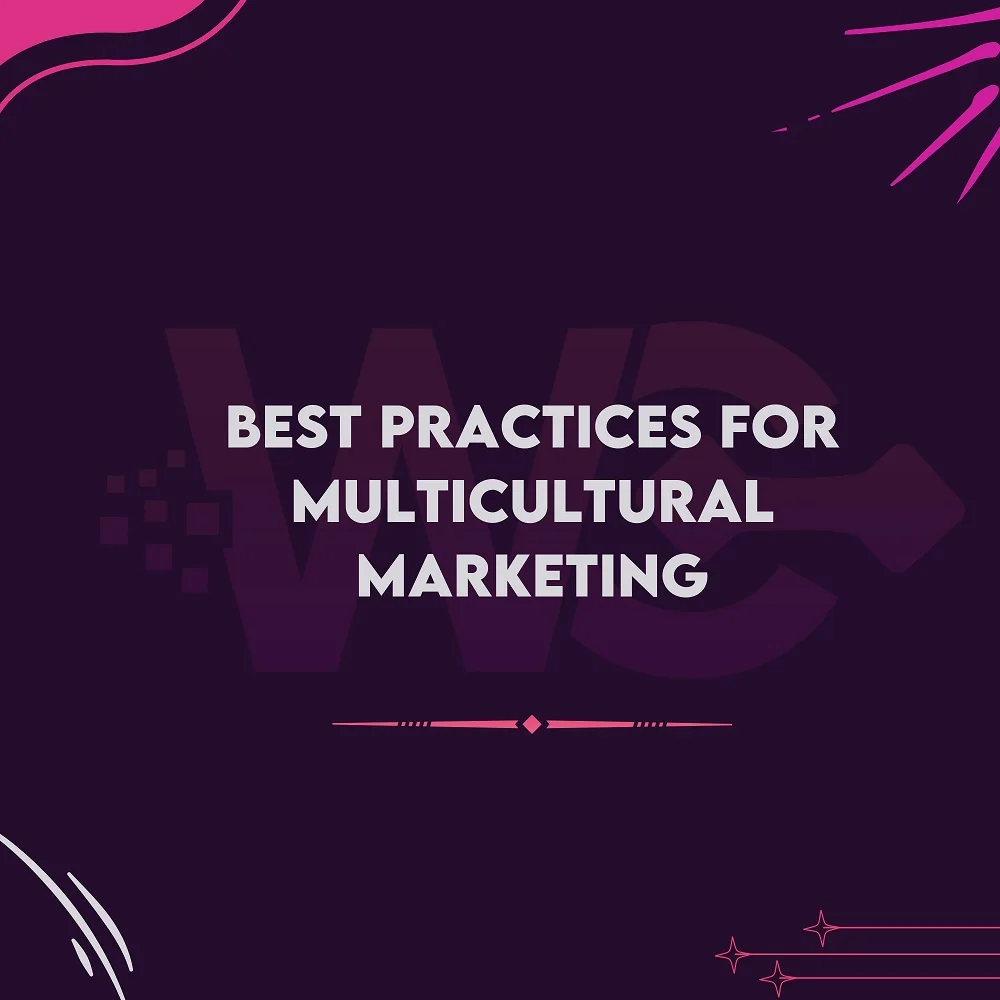
To implement multicultural marketing best practices, consider the following steps.
Understand your target audience:
Conduct research: Start by thoroughly researching the culture, values, and preferences of your target groups. This analysis will provide insight into the nuances of each group’s practices and applications.
Classification: Group your target audience based on cultural similarity rather than broad generalizations. This segmentation allows you to fine-tune your marketing strategies to suit any specific group.
Customer Research and Feedback: Engage with your multicultural audience through surveys and feedback strategies to gather first-hand insights into their preferences, challenges, and needs.
Cultural Sensitivity Training: Provide cultural sensitivity training to your marketing team to ensure they understand and respect the cultural nuances of target groups. This training can prevent inadvertent cultural errors in your campaigns.
Take local resources: Adapt your marketing to each cultural group. This can include language translations, cultural references, and images that align with the values and traditions of the specific audience you are targeting.
Cultural Sensitivity:
Avoid Stereotypes: Avoid using all stereotypes or statements about cultural groups in your marketing materials. Instead, focus on painting honest and respectful portraits of diverse individuals.
Explore cultural norms: Be thorough about the cultural norms, traditions, and values of the community you are visiting. This understanding will help you create marketing messages that speak to the audience without offending them.
Consult with cultural experts: Get guidance from cultural experts or consultants to ensure that your marketing materials are culturally appropriate. Their insights can help navigate sensitive and nuanced cultural issues.
Inclusive representation: Show a diverse range of individuals from different cultures in your marketing campaigns. This inclusive stance not only reflects diversity but also fosters connections with a wider audience.
Language Considerations:
Accurate Translation: Make sure your marketing materials are translated accurately and culturally appropriate. Use professional translators who understand the nuances of both languages to get your message across smoothly.
Culturally Relevant: Adapt your language to their culture. Consider idiomatic expressions, jargon, and local dialects to fit the cultural context of your target audience.
Multilingual approach Consider using a multilingual approach if you target multicultural groups who speak different languages. This may require separate marketing campaigns in each language to cater to your audience’s languages.
Localization: Beyond translation, localize your content by adapting it to the cultural preferences and sensibilities of different language groups. This may involve modifying images, colors, and symbols to suit the cultural values of each target audience.
Inclusive Marketing:
Representative diversity: Make sure your marketing materials reflect a diverse range of individuals from different cultures. Representation matters, and displaying diversity in your campaigns can help your audience feel recognized and included.
Community Engagement: Interact directly with culturally diverse communities to understand their needs, values, and aspirations. This interaction can provide valuable insights for creating marketing campaigns that touch a variety of audiences.
Training and education: Provide your marketing team with cultural competency training to ensure they understand the importance of inclusive marketing practices and how to implement them effectively.
Feedback and adapt: Listen to feedback from different audiences and be willing to adapt your strategies based on their feedback. Continuous improvement is key to the success of inclusive marketing campaigns.
Inclusive language: Use inclusive language that is sensitive to diversity and avoids excluding any cultural group. Consider how certain words or phrases are viewed differently in different cultures and try to incorporate them into your message.
Adaptation of Marketing Channels:
Analyze audience preferences: Conduct research to understand the media preferences your multicultural audience is targeting. Different cultural groups may favor specific channels such as social media, online media, or traditional media.
Tailor Content Format: Tailor your marketing content format to your chosen method and to different cultural groups. This can be videos, infographics, or text in languages and formats that appeal to your multicultural audience.
Multichannel Approach: Use a multichannel marketing strategy that includes a mix of traditional and digital channels to effectively reach different cultural groups. This can include social media, print media, radio, television, and online platforms.
Localize strategies: Consider decentralizing your marketing channels to cater to specific cultural preferences. This may include creating industry-specific social media accounts, websites, or advertising campaigns to effectively engage with different audiences.
Cultural Events and Holidays:
Explore cultural significance: Look for cultural events and holidays that relate to your multicultural goals. Understand the traditions, customs, and implications of each event to ensure respect and authenticity.
Create custom campaigns: Create marketing campaigns that align with the cultural themes and values of specific events or holidays. Customize your messaging, images, and promotions to connect with your multicultural audience on a deeper level, in keeping with the spirit of the event.
Participate in community celebrations: Participate in or sponsor community celebrations and events related to cultural holidays. This involvement demonstrates your commitment to diversity and inclusion and allows you to engage with customers in a meaningful way.
Promote Cultural Awareness: Use your marketing strategies to raise awareness of cultural events and holidays. Share educational content, stories, and traditions to create understanding and appreciation in the audience.
Feedback and Adaptation:
Collect data: Encourage feedback from your multicultural audience through surveys, focus groups, social media analysis, and direct communication. Listen to their ideas, suggestions, and concerns about your marketing efforts to gain valuable insights.
Interpret feedback: Analyze the feedback to identify trends, common themes, and areas for improvement. Understand the preferences, cultural nuances, and expectations of different audience segments to adapt your marketing strategy accordingly.
Frequent revisions: Use the information gathered to make frequent revisions to your multicultural marketing strategy. Implement message, image, style, and campaign changes based on insights from the feedback process.
A/B testing: Conduct A/B tests to compare different marketing variations and see which one resonates best with your cultural audience. Analyzing things like language, images, offers, and calls to action can optimize engagement and conversion rates.
By following these best practices, you can create impactful multicultural marketing campaigns that reach different audiences and create meaningful connections with customers from different cultures.










